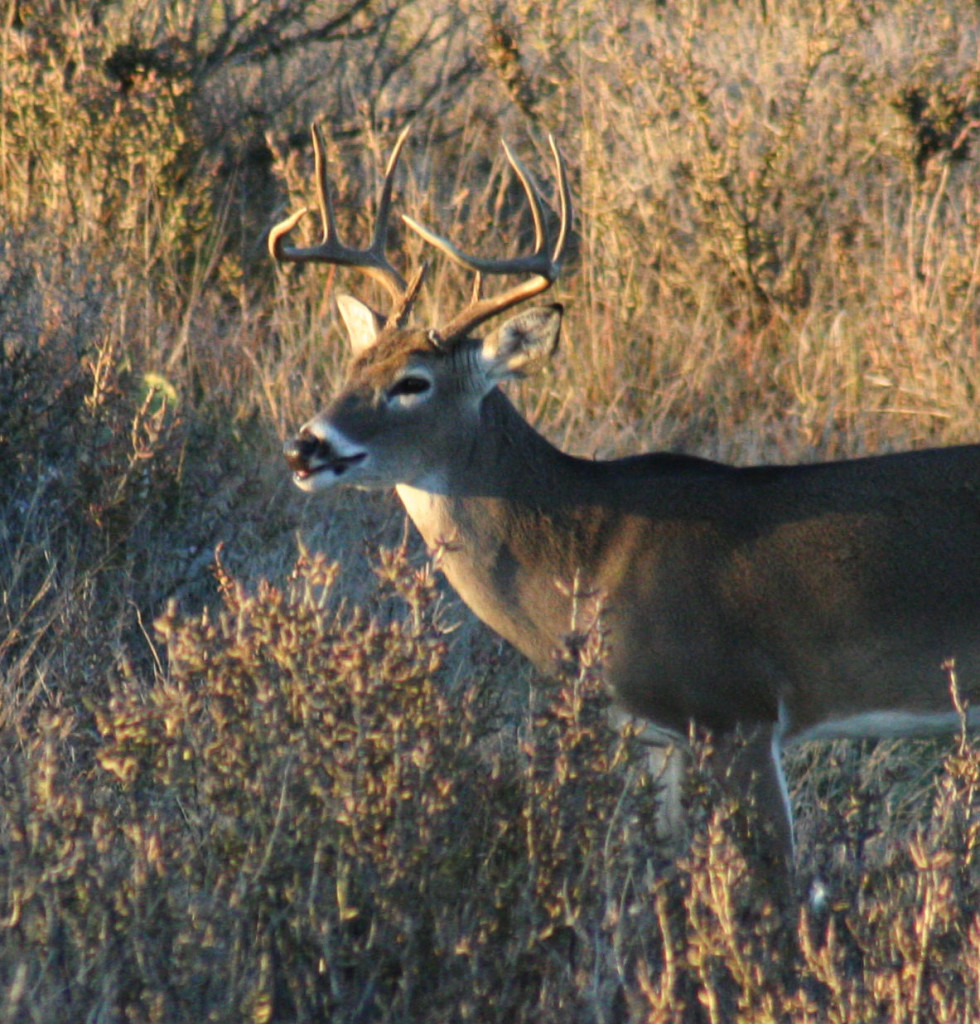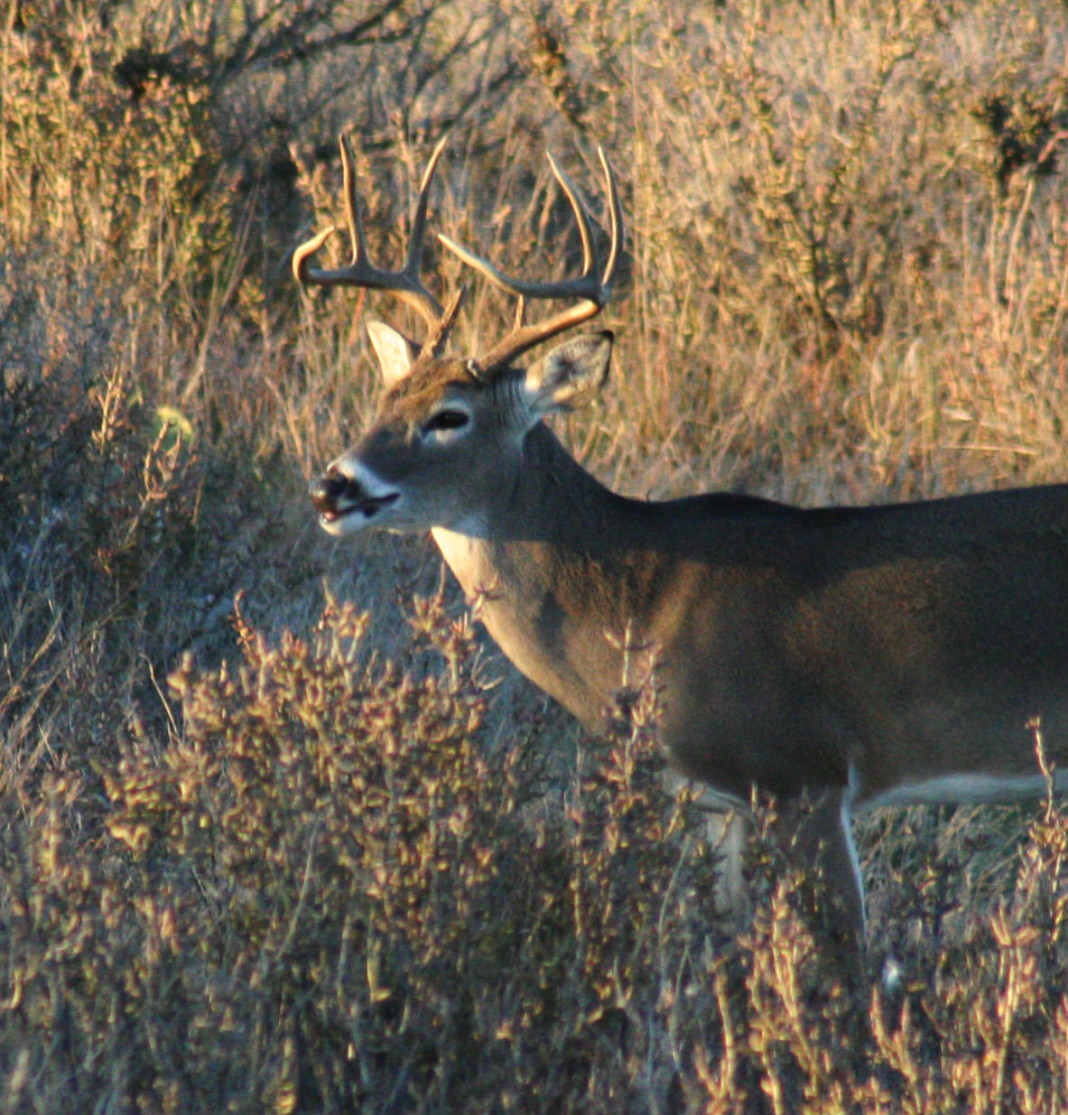The annual shakedown cruise at the family deer lease was running smoother than ever.
Family commitments and other September items on the agenda in 2000 had made the yearly run to our time-honored hunting spot south of San Angelo to inventory and to check stands and feeders a one-day marathon session, which wasn’t made any easier with a 700-mile roundtrip from Amarillo. But we surprisingly were rolling along as the half-dozen stand and feeder setups on this section in sheep and goat country all seemed to be free from raccoon and cattle interference.
As the Tahoe slowly creeped along a rocky path worn down by other trips to get to the last feeder on the agenda at the front of the place, the bright morning seemed like it was only getting brighter.
Five minutes later, the warmth was replaced with a horrid chill I’ll never forget.
After pulling out the well-worn 6-foot stepladder and placing it to access the top of this new hanging feeder as we had done with the others, my father shimmied up to pull the lid.
“Just need two bags of corn for this one,” he said with a grin as he looked into the aluminum apparatus.
Then, to my horror and to his detriment, the ladder and he came down in one heap on the parched, cracked earth. Whether it wasn’t properly locked out or he simply shifted his weight too much before I could haul over two 50-pound sacks, the ladder had dealt a crushing blow to his right heel. We later would learn his right heel bone had been shattered in a dozen places from awkwardly landing on it.
I certainly know it is foolish to be doing this kind of work alone, but I shudder to think what would have happened had he been by himself, leaning against a weathered oak tree and gasping in pain as his cellphone sat on the dash of the SUV 25 yards away.
Would he have been able to crawl back into the vehicle and drive to the front gate, get out to unlock it and then make it back inside before driving to the emergency room?
Thankfully, we’ll never know.

Since I happened to be along and even though I probably was in shock, I promptly helped my hobbling father into the backseat, packed his foot in ice from the drink cooler and fed him a heaping dose of ibuprofen. Then I even sauntered over to pick up the ladder, which had felled a man who 100 other potentially deadly things he had come across in the outdoors could not. The 45-minute ride back to civilization felt like 45 hours, but after finally pulling into the ER entrance I breathed a sigh of relief as an attendant wielding a wheelchair plucked the patient from the backseat and carted him in.
Seven hours later and after deciding it was best to receive treatment back home, we departed on the five-hour ride north, and when I pulled into the driveway just past 1 a.m., I breathed an even larger sigh of relief. The accident put a damper on his hunting and fishing exploits for the next six months and even now I think pain sets in if he goes too hard on it, but it sure beats the alternative.
Firearm-related hunting accidents are at an all-time low in Texas but with hundreds of thousands of men, women and children heading afield this time of year, the possibility for injury in a myriad of ways increases exponentially. And when you add in the fact that those accidents could happen miles from proper medical care, it begs that you go over your emergency gear and planning for anything that could happen. Something relatively little soon could become a life-or-death scenario if you’re not ready.
The first thing you should always have is a good first-aid kit, and not just the $10 one with antibacterial ointment and bandages. Another good thing to have is a complete first-aid handbook that could help you remedy even small problems. Essentials to have whether you’re backpacking 30 miles or heading to the back of the deer lease include water, basic food, a multi-tool or similar device and something with which to start a fire.
It’s also best to know where good medical care is, including the nearest 24-hour ER, even if it’s not right around the corner. In some areas that proper care could be a triple-digit drive, but even in civilized Texas knowing that information could save time wasted pondering map directions. And should you need medical care, have your insurance information handy. It speeds things up at the ER (for the most part) if you can pluck a card from your wallet with all the particulars instead of trying to hunt that down when your focus is alleviating pain for you or someone else.
The one item you always should have on your person is a cellphone. I would say at least carry one in your vehicle, but it doesn’t do much good if you’re hobbled for whatever reason and can’t call out for help. There are parts of Texas void of cell signal, but for the most part that modern technology likely has saved more lives than anything. And with pay-as-you-go phones and emergency-only models running pretty cheap these days, it’s the best insurance you can buy.
Make sure you also tell someone exactly where you are and your exact expected return date. You often hear horror stories of people being stranded or lost and no one knowing anything is wrong until too late simply because they didn’t spell out their intentions. Even on that 640-acre parcel of land we had hunted for years it could take hours to properly search out even the likely spots where a ladder accident could have occurred.
Better yet, if you’re thinking about flying solo, offer to take someone along, who just might end up saving your life.
Oh, and be careful with ladders.


















